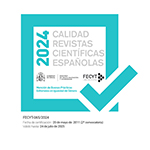Circuitos mercantiles, circulación de personas y criminalidad en la configuración de espacios políticos. Valle de Uco (Mendoza, Río de la Plata), primera mitad del siglo XIX
Resumen
En este trabajo buscamos observar en qué medida la configuración de un espacio político, en este caso Valle de Uco (jurisdicción de Mendoza), estuvo atravesada al menos por dos tramas de variables. Por un lado, la visibilización de una serie de circuitos mercantiles en el sur de Mendoza que articulaban las zonas de frontera, aún más allá de las no dominadas por los hispanocriollos, y con los pasos cordilleranos de esa zona. Por otro lado, el “problema” de la criminalidad en ciertas coyunturas político-militares que generaban una movilidad notable de población y un flujo más intenso de productos, pero que también servía como argumento para justificar políticas de control creciente sobre los espacios rurales. En este sentido, la exposición estará organizada en dos apartados. En el primero intentaremos mostrar cómo con la Revolución se consolidaron oficialmente circuitos mercantiles que tenían larga tradición colonial y adquirieron luego de 1820 mayor visibilidad para los gobiernos. En el segundo, analizaremos de qué modo, si bien los ataques contra la propiedad pudieron haber aumentado en ciertas coyunturas, su creciente criminalización y punición quizá se profundizó al ritmo de la consolidación de una burocracia estatal provincial que necesitaba garantizar la seguridad de la propiedad privada y la pública en los espacios de tráfico mercantil y producción ganadera.Descargas
Descarga artículo
Licencia
La Revista Complutense de Historia de América, para fomentar el intercambio global del conocimiento, facilita el acceso sin restricciones a sus contenidos desde el momento de su publicación en la presente edición electrónica, y por eso es una revista de acceso abierto. Los originales publicados en esta revista son propiedad de la Universidad Complutense de Madrid y es obligatorio citar su procedencia en cualquier reproducción total o parcial. Todos los contenidos se distribuyen bajo una licencia de uso y distribución Creative Commons Reconocimiento 4.0 (CC BY 4.0). Esta circunstancia ha de hacerse constar expresamente de esta forma cuando sea necesario. Puede consultar la versión informativa y el texto legal de la licencia.











